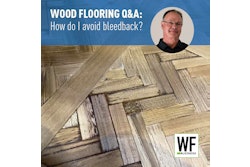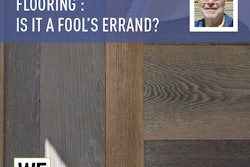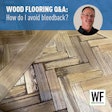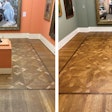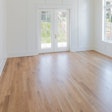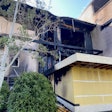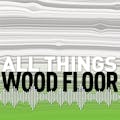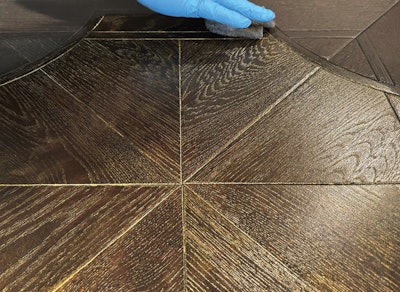
Dan Antes, general manager at Distinctive Hardwood Floors in Bloomington, Ind., answers:
The word “ceruse” comes from the Old French “ceruse,” which itself comes from the Latin “cerussa,” which means “white lead.” In the wood flooring industry, ceruse means is a lighter colored grain fill on a darker background. Wood floor master Birger Juell once told me that in wood flooring, the ceruse effect originally came from the time of the bubonic plague, when lime would be spread all over houses in an attempt to cleanse them of the disease and the lime remained in the grain of the floors!
To get a ceruse effect in today’s wood floors, no disease or lime is needed. You do need porous-grained woods—it won’t work on cherry or maple, for example. Oaks work well (red oak works better than white oak) and ash ceruses really nicely. If you do a typical sanding on walnut, it will get a small ceruse effect, but if you wire-brush it you’ll get a more pronounced ceruse (of course, wire-brushing will exaggerate the look of cerusing for any species you use).
Usually cerusing is done with oil finishes, and many manufacturers of oil finishes have directions for how to use their products for a ceruse effect or have specific products for cerusing, but you can also create the whatever effects you want using your own imagination. The typical process is that you apply your darker base coat, then once that is dry, you apply another coat with the contrasting lighter color. You can experiment with effects; some of the most fun ceruse floors I’ve done were shou sugi ban floors that had mica powder in the ceruse layers. The options with mica powders are almost endless: from different pearl shimmers to gold to silver to almost any color.
Watch a video showing the technique for cerusing with gold and silver effects here:














